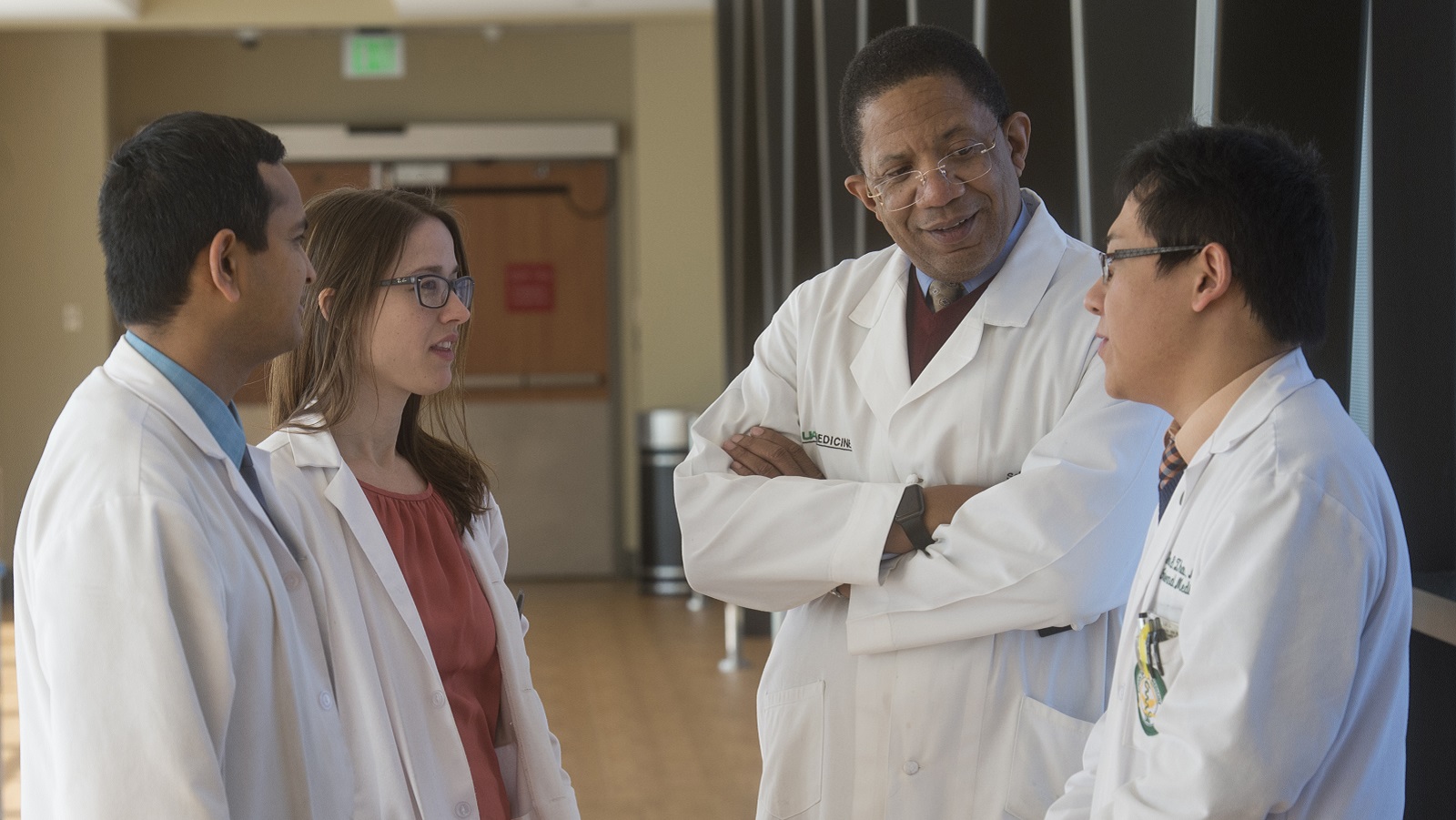If there is any silver lining to the COVID-19 pandemic, it’s that we now have the opportunity to address ongoing societal failures that have been thrown into stark relief by this crisis. Perhaps chief among them is our complacency toward deeply entrenched racial and socioeconomic health disparities, which have become even more deadly in the face of COVID-19.
There is ample evidence in states across the country, including Michigan, Louisiana, and North Carolina, that disproportionately high rates of chronic diseases like hypertension, asthma, and diabetes among people of color dramatically affect outcomes and mortality from COVID-19. In my own state of Alabama, as of May 25th, 43% of the state’s 575 COVID-19 deaths are among African Americans, who represent only 26% of the state’s population.
According to one recent analysis, African Americans are more than 3.5 times more likely to die from COVID-19 than white people, and Latino people are almost twice as likely to die from the disease. The Centers for Disease Control and Prevention (CDC) has largely pinned the blame for this disparity on socioeconomic factors:
Health differences between racial and ethnic groups are often due to economic and social conditions that are more common among some racial and ethnic minorities than whites. In public health emergencies, these conditions can also isolate people from the resources they need to prepare for and respond to outbreaks.
Health disparities in the United States are a complex problem with a multitude of causes, including inequities in housing, education, transportation, employment, and fresh foods. The toll these inequities take on human health is profound; research has shown that socioeconomic and environmental factors account for approximately 50% of a person’s overall health.
For decades we have, as a country, regarded health disparities as a failure of individual responsibility, blaming higher rates of chronic disease among certain populations mainly on the personal choices of the individuals in those groups. The pandemic has brought to light that refusing to address barriers to health and healthcare faced by people in our most vulnerable communities—many of whom are now considered “essential workers” in industries like food service, transportation, and healthcare—inevitably intersects with and poses a danger to the health of everyone, even the most privileged in our society.
Moreover, our generations-long apathy toward health disparities comes at a massive cost, and not just to individual health. According to the Kaiser Family Foundation, disparities account for approximately $93 billion in excess medical care costs and $42 billion per year in lost productivity and premature deaths.
Having seen the damage health disparities can wreak illustrated so vividly by the current pandemic, we now have an opportunity to address the problem on many fronts, including through medical education and training. As we emerge from this pandemic, medical schools must make health disparities and the social determinants that contribute to them a fundamental part of their curricula. Addressing health disparities isn’t just about social justice—it is key to reducing costs across the healthcare system and improving care for everyone.
Here at the University of Alabama at Birmingham (UAB) School of Medicine, we have developed several programs to educate our students about health disparities. The Health Equity Scholars (HES) program gives a select group of students in-depth experience in the social determinants of health and health disparities through workshops, classes, research experiences, and service-learning activities throughout the four years of medical school. The HES special topic, “Health Equity in 2020,” was recently expanded to focus on how pandemics such as COVID-19 uniquely affect vulnerable populations. Students heard from an expert from the CDC, a physician who works in rural Africa, a physician spearheading COVID-19 care for people experiencing homelessness in our country, and an advocate for Hispanic women experiencing domestic violence during the quarantine.
Health disparities and cultural competency training has also been incorporated into our students’ very first class, “Patient, Doctor, and Society,” which students complete during orientation, prior to beginning their first year. In this innovative course model, students learn directly from real patients, comparing the post-heart attack healthcare experiences of four people with different socioeconomic statuses, insurance statuses, and racial backgrounds. Students interview the patients, perform health assessments of patients’ neighborhoods via windshield survey, and review public health data about the neighborhoods. In this way, students gain a unique perspective of how a catastrophic illness can have widely varying effects on patients depending on a variety of social factors.
Our Office of Service Learning works to highlight the importance of social determinants of health across our curriculum. Service-learning experiences throughout the first two years of medical school help students understand the nuances of applying textbook medicine in a complicated and ever-changing society. In most preclinical modules, students go out into the community to see how an issue taught in the classroom can be addressed. They learn how much more complex and difficult it can be to manage that issue in the community because of social inequalities.
The Alabama chapter of the Albert Schweitzer Fellowship is housed in the UAB School of Medicine, in partnership with the UAB Schools of Dentistry, Health Professions, Nursing, and Public Health. The Alabama chapter is one of 13 Schweitzer Fellowship program sites across the U.S. dedicated to developing a pipeline of emerging professionals who will enter the workforce with the skills and commitment necessary to address unmet health needs. Alabama Schweitzer Fellows are competitively chosen from a variety of graduate and professional degree programs at universities throughout the state. As Schweitzer Fellows, they work to address health disparities in their communities by developing and executing innovative and creative projects.
A key health disparities resource on our campus is the National Institutes of Health (NIH) funded UAB Minority Health & Health Disparities Research Center (MHRC), which provides a critical connection between investigators and vulnerable populations. The MHRC’s research and training programs enable young scientists to pursue research on health disparities, while their community outreach programs identify urgent health needs and implement evidence-based strategies to reduce health disparities and promote health equity. In addition, UAB Health System CEO Will Ferniany, PhD, has outlined a plan to develop a community health service line to support minority and at-risk populations. This service line will complement the MHRC as a clinical implementation arm.
Finally, under the leadership of President Ray Watts, MD, the University of Alabama at Birmingham has launched a Grand Challenge program that will begin the transformative work of changing the health equation for all Alabamians, particularly those directly affected by health disparities. The winning project, Live HealthSmart Alabama, led by MHRC Director Mona Fouad, MD, MPH, seeks to lift Alabama out of the bottom 10 in national health rankings through significant changes in policies, systems, and the built environment, as well as proven intervention strategies.
Through exposure to these and other initiatives, our students, faculty, and staff learn that no picture of healthcare and health outcomes in the U.S. is complete without a robust understanding and appreciation of the complexity and significance of health disparities and social determinants of health. Now, as we grapple with the COVID-19 pandemic, the concept of training medical students in health disparities fits readily into a broader set of training priorities around public health, disaster preparedness, and epidemiology that takes on a new urgency at medical schools across the country. Rather than considering these as separate issues, addressing health disparities should be considered an important tool to ensure that all our communities are as healthy as possible and, as such, better prepared to weather future public health threats.
**Feature photo provided and used with permission from author Selwyn M. Vickers.
Interested in contributing to the Harvard Primary Care Blog? Review our submission guidelines
Interested in other articles like this? Subscribe to the Center's bi-weekly newsletter

Selwyn M. Vickers, MD, FACS, is Senior Vice President for Medicine and Dean of the University of Alabama at Birmingham (UAB) School of Medicine. He holds the James C. Lee Jr. Endowed Chair at the University of Alabama at Birmingham and is Chair of the University of Alabama Health Services Foundation Board.
- Share
-
Permalink


